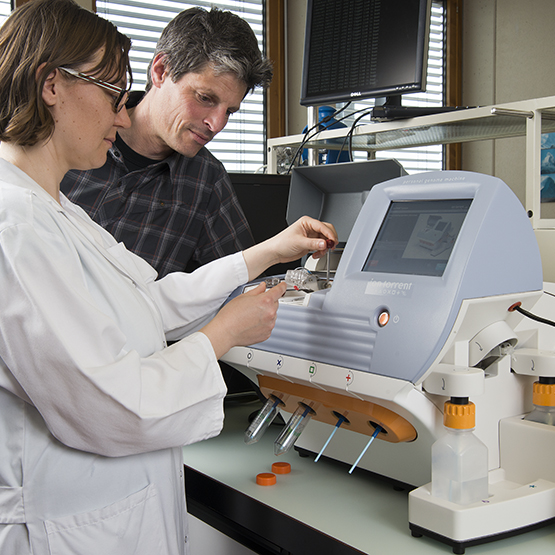Lactic acid bacteria are important in the production of fermented foods such as bread, sauerkraut, yoghurt, cheese and wine. Today, using modern genomics, we can draw conclusions about the metabolism of bacteria based on their genome. In this way, bacterial diversity can be used to further optimise the safety and quality of fermented foods.
Lactobacillus casei is characterised by a variety of metabolic activities, allowing this lactic acid bacterium to live in various habitats, e.g. in plant material, in the human gut and in dairy products. As it is one of the most common bacterial species in mature Swiss raw-milk cheeses, we may assume that its metabolic activity influences the quality and flavour of cheeses. In partnership with the University of Bern, and using state-of-the-art sequencing technologies, Agroscope scientists have decoded the genome of 40 strains of this bacterium, all of which come from milk and cheese.
High bacterial diversity
The analysis showed a different size of genome for each of the 40 bacterial strains, ranging from 2501 to 3078 genes. The strain with the most genes is therefore characterised by the fact that it possesses a whole 577 genes more than the strain with the fewest genes. Genes present in all strains were identified from the data. They form, so to speak, the constant part, referred to as the ‘core genome’, and account for about 60% of the genome on average. The other 40% are variable, i.e. are not present in all strains. This explains why such a wide variety of metabolic activities are observed in Lactobacillus casei.
The molecular reason for the variable part of the genome was traced back to horizontal gene transfer. This is a mechanism whereby the bacteria exchange genetic material within their own species and with other bacterial species.
Exceeding limits
The function of genes is revealed inter alia in external (phenotypical) characteristics such as e.g. metabolic activities. Genome-wide association studies explore how bacterial genes correlate with phenotypical characteristics. This has led, for example, to the discovery that some strains of Lactobacillus casei can convert the sulphur-containing amino acid methionine into another sulphur-containing amino acid, cysteine. Rarely described to date, this bacterial metabolic activity is important for the formation of sulphur-containing flavour compounds in cheese.
In addition to enabling important new knowledge to be obtained from complex genome datasets, this approach will also be used in future to explore issues such as antibiotics resistance, survival when exposed to heat and oxidative stress in the fermentation process, the formation of flavour and gases in foods, and health-promoting properties.
Low costs
The technology applied in this project is often referred to as ‘next-generation sequencing’, and is based on the fact that millions of sequencing reactions are carried out in parallel in miniaturised form. The sequence of the building blocks from which the genome of an organism is composed is then readable in the computer. This makes it possible to decode the genome of different bacteria in just a few days and at a relatively low cost.
This genome study has armed Agroscope with important basic knowledge that allows us to address bacterial and biotechnological problems posed by fermented foods, thereby enabling the quality and safety of these foods to be further optimised.









